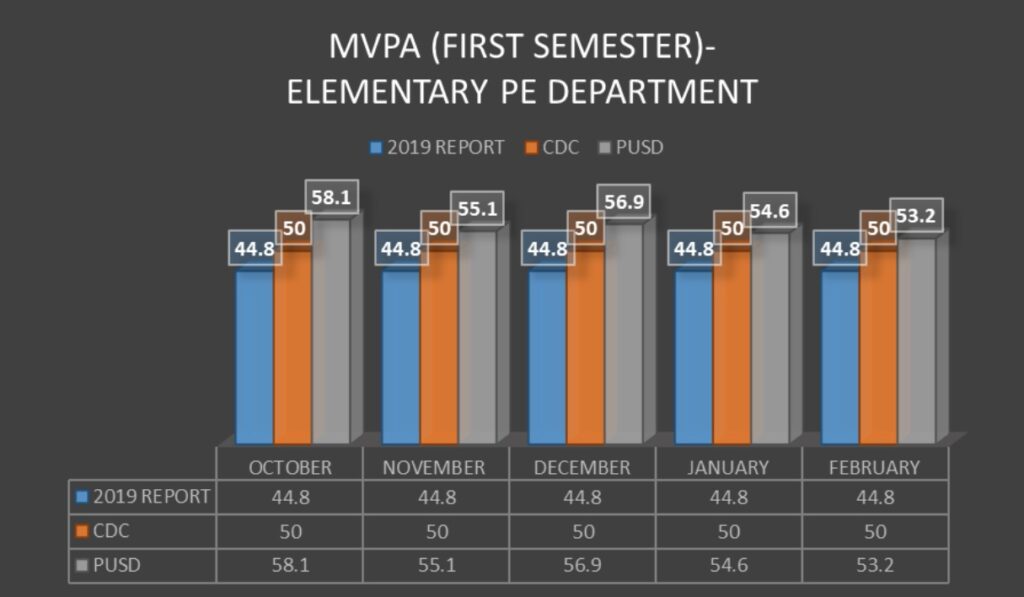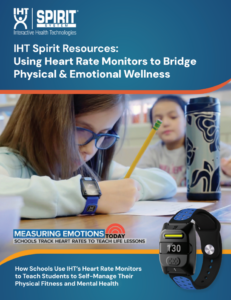When Michelle Baumgartner, Physical Education Specialist at Pomona Unified School District in California, was told “no” by her school district, she didn’t take that as the final answer.
“I thought that [IHT’s heart rate monitors] would be a great tool for our teachers to use, for our students, and to motivate our students to meet the fitness goals for physical education, and also help with meeting their standards in physical education in California,” Baumgartner said.
Her perseverance paid off greatly: Pomona’s PE classes that utilized IHT’s heart rate monitors averaged a 25% increase in moderate-to-vigorous physical activity (MVPA) than years prior, also surpassing the CDC’s recommendation of 50% of PE class time spent in MVPA.
IHT’s Spirit heart rate monitors provide students and teachers with real-time biofeedback during PE class, displaying the child’s current heart rate and a color indicating the student’s current level of activity (also called a heart rate zone):
- Blue indicates low level activity or normal resting heart rate
- Yellow indicates moderate levels of activity or elevated heart rate
- Red indicates vigorous levels of activity or maximum heart rate (MVPA)
Data is easily collected and analyzed in our Spirit System Software Suite, three seamlessly connected apps and platforms that allow real-time group engagement and the tracking of fitness progress.
So, how did the Pomona School District increase their students’ MVPA so dramatically?
After the district turned down her first request to purchase the heart rate monitors, Baumgartner utilized a different approach when requesting them the next year.
“The second time, I said, ‘Why can’t we pilot it at six schools to start with?’ Our district is really big on data for our students and to see how they’re performing in PE, so I think it was a big plus for them.”
Baumgartner also found that COVID relief funding was available to the district to help fund the purchase of the monitors, which undoubtedly powered her success.
“I asked, if we have this money, why can’t we use it for PE? Because technology is very hard to find for PE.”
Her determination paid off and the school board approved the program. Then it was time to get to work.
The pilot program grew from the initially-planned six, to the PE classes in all 24 elementary schools, reaching about 3,800 students in 4th, 5th, and 6th grades. Students wore the heart rate monitors in PE class throughout the entire 2024/2025 school year. Each school received 35 monitors, plus thorough training, curriculum support, and customer support from IHT.
“That was really really really helpful for [the teachers].” she said. “We’ve really felt the support.”
And the PE teachers quickly noticed how the monitors benefited them and their students.
“My teachers said it helped them with their classes, meaning the grading part of it, but also with the students when they were participating,” she said. “It helped their students get motivated to do their activities. But also the teachers said there were a couple times when they had an assembly and they couldn’t use [the monitors], and the kids would ask why they weren’t using them. It became part of their program, so when they couldn’t use it on a certain day, it didn’t seem the same and the kids were asking for them.”
The heart rate monitors increased student participation so much that the teachers who initially pushed back against the new program changed their minds.
“I did have three or four teachers who were very hesitant about using it at first. Because it’s new, they saw it as it would be too much on their plate. [This year,] the teacher who was the most hesitant last year said: ‘I’m in. I’m going to be using them all year.’”
As someone who is passionate about motivating students about PE, Baumgartner said that the heart rate monitors help create a love of participating in fitness activities.
“IHT is beneficial for any school district,” she said. “It will definitely give your students motivation to do better in PE but also to reach their own personal fitness goals.”
25% Increase in MVPA, Exceeding The CDC’s Recommendation
Before our heart rate monitors were introduced to the Pomona School District, an average of 44.8% of PE class time was spent in moderate-to-vigorous physical activity (MVPA). It was frustratingly 10.4% lower than the CDC’s recommendation of 50% of PE class time spent in MVPA.
Once the new heart rate monitor program was implemented, Baumgartner and her co-workers gathered data to determine if the monitors provided positive results and value. The findings were nothing short of awesome.
Their elementary PE classes experienced nearly a 25% increase in MVPA their first semester of using the heart rate monitors, surpassing the CDC’s recommendation by 11.2%. The first month the students used the heart rate monitors in 2024, they exceeded the CDC’s recommendation of class time spent in MVPA by a whopping 16.2%.

The results of the student heart rate monitor usage were so significant and promising that the district expanded the program to include middle school and high school PE classes, as well as the existing elementary school PE classes, for the 2025/2026 school year.
“I really feel that it’s a really good motivational tool for the students, but for the teacher as well, because the teacher is there to motivate the students to move,” Baumgartner said.
She shared a student story that showcases how the heart rate monitors impacted students and their levels of participation in PE.
“There was a girl in fifth grade who was using the heart rate monitor, and she says [to me], ‘Are we keeping these heart rate monitors? Because I really like them,’” Baumgartner said.
This student explained to Baumgartner that she didn’t really participate in PE much before, but now that she has the heart rate monitor, it helps her know if she needs to move faster, slower, or if she’s in the red, creating a clear expectation of what the goal of class is and if the student met that goal.
Baumgartner said the student concluded: “‘The teacher will give me a high-five if I met the goal for the day and it tells me if I accomplished something in the class.’”
“It promoted physical education at the schools. The kids usually love the PE teachers and look forward to it, but even more now, because they know they’re going to be using the heart rate monitors.”


